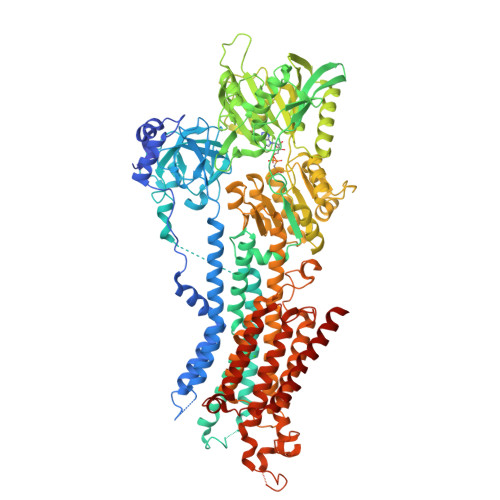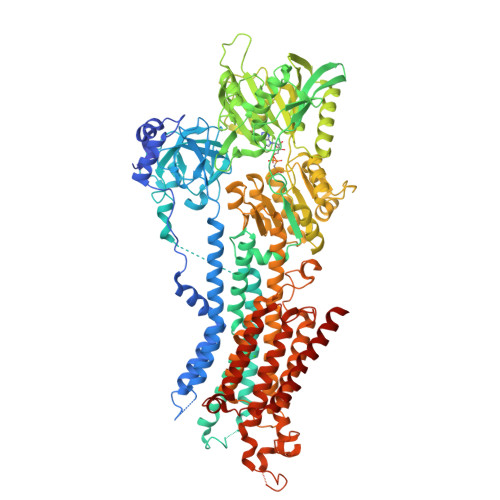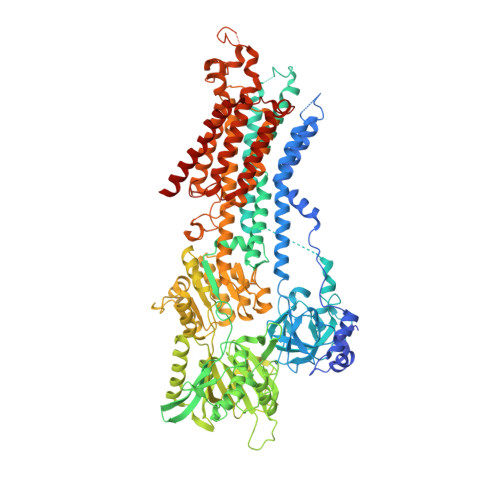Structural Basis of Sarco/Endoplasmic Reticulum Ca2+-ATPase 2b Regulation via Transmembrane Helix Interplay.
Inoue, M., Sakuta, N., Watanabe, S., Zhang, Y., Yoshikaie, K., Tanaka, Y., Ushioda, R., Kato, Y., Takagi, J., Tsukazaki, T., Nagata, K., Inaba, K.(2019) Cell Rep 27: 1221-1230.e3
- PubMed: 31018135
- DOI: https://doi.org/10.1016/j.celrep.2019.03.106
- Primary Citation of Related Structures:
5ZTF, 6JJU - PubMed Abstract:
Sarco/endoplasmic reticulum (ER) Ca 2+ -ATPase 2b (SERCA2b) is a ubiquitously expressed membrane protein that facilitates Ca 2+ uptake from the cytosol to the ER. SERCA2b includes a characteristic 11 th transmembrane helix (TM11) followed by a luminal tail, but the structural basis of SERCA regulation by these C-terminal segments remains unclear. Here, we determined the crystal structures of SERCA2b and its C-terminal splicing variant SERCA2a, both in the E1-2Ca 2+ -adenylyl methylenediphosphonate (AMPPCP) state. Despite discrepancies with the previously reported structural model of SERCA2b, TM11 was found to be located adjacent to TM10 and to interact weakly with a part of the L8/9 loop and the N-terminal end of TM10, thereby inhibiting the SERCA2b catalytic cycle. Accordingly, mutational disruption of the interactions between TM11 and its neighboring residues caused SERCA2b to display SERCA2a-like ATPase activity. We propose that TM11 serves as a key modulator of SERCA2b activity by fine-tuning the intramolecular interactions with other transmembrane regions.
Organizational Affiliation:
Institute of Multidisciplinary Research for Advanced Materials, Tohoku University, Sendai 980-8577, Japan; Core Research for Evolutional Science and Technology (CREST), Japan Science and Technology Agency, Saitama, Kawaguchi, Japan.



















